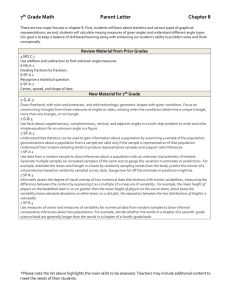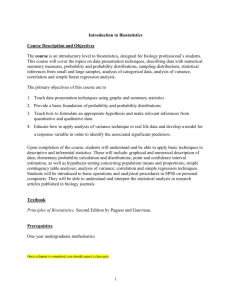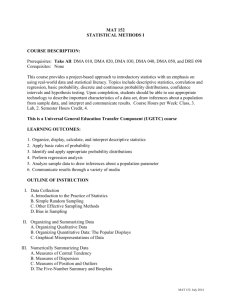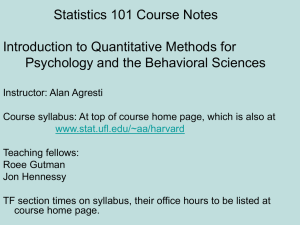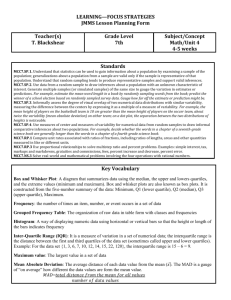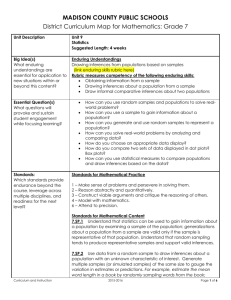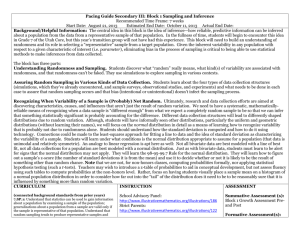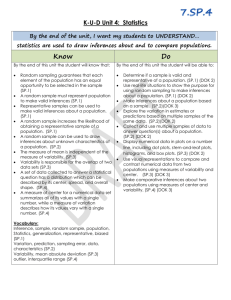CCGPSM7 Unit 1 Checklist
advertisement
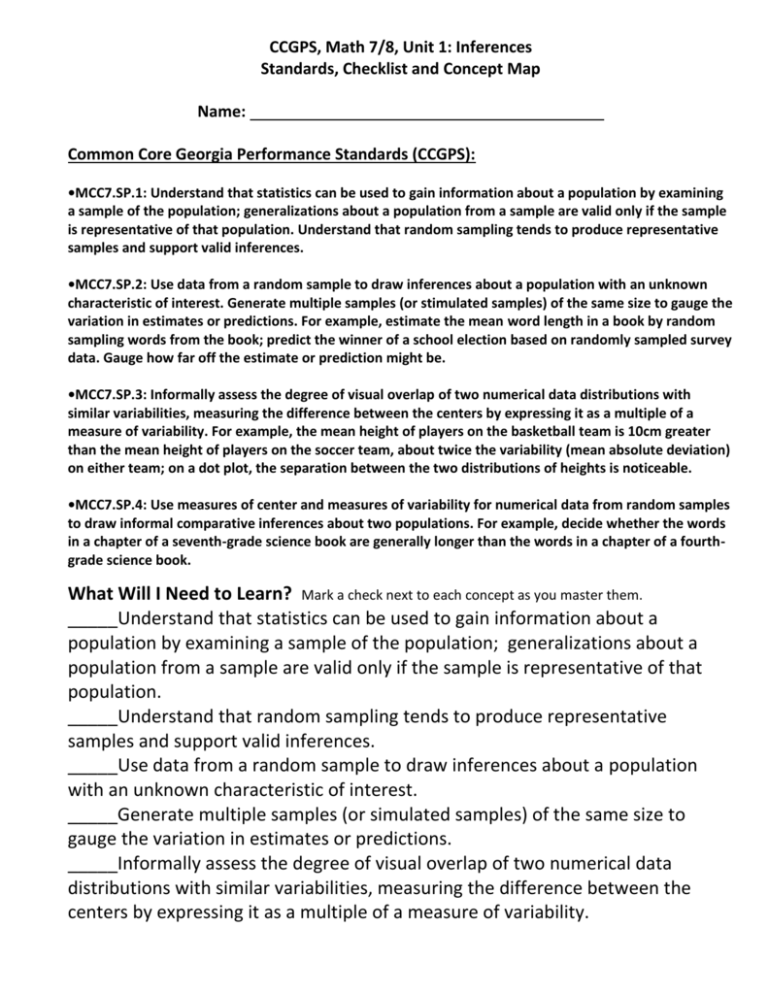
CCGPS, Math 7/8, Unit 1: Inferences Standards, Checklist and Concept Map Name: Common Core Georgia Performance Standards (CCGPS): •MCC7.SP.1: Understand that statistics can be used to gain information about a population by examining a sample of the population; generalizations about a population from a sample are valid only if the sample is representative of that population. Understand that random sampling tends to produce representative samples and support valid inferences. •MCC7.SP.2: Use data from a random sample to draw inferences about a population with an unknown characteristic of interest. Generate multiple samples (or stimulated samples) of the same size to gauge the variation in estimates or predictions. For example, estimate the mean word length in a book by random sampling words from the book; predict the winner of a school election based on randomly sampled survey data. Gauge how far off the estimate or prediction might be. •MCC7.SP.3: Informally assess the degree of visual overlap of two numerical data distributions with similar variabilities, measuring the difference between the centers by expressing it as a multiple of a measure of variability. For example, the mean height of players on the basketball team is 10cm greater than the mean height of players on the soccer team, about twice the variability (mean absolute deviation) on either team; on a dot plot, the separation between the two distributions of heights is noticeable. •MCC7.SP.4: Use measures of center and measures of variability for numerical data from random samples to draw informal comparative inferences about two populations. For example, decide whether the words in a chapter of a seventh-grade science book are generally longer than the words in a chapter of a fourthgrade science book. What Will I Need to Learn? Mark a check next to each concept as you master them. _____Understand that statistics can be used to gain information about a population by examining a sample of the population; generalizations about a population from a sample are valid only if the sample is representative of that population. _____Understand that random sampling tends to produce representative samples and support valid inferences. _____Use data from a random sample to draw inferences about a population with an unknown characteristic of interest. _____Generate multiple samples (or simulated samples) of the same size to gauge the variation in estimates or predictions. _____Informally assess the degree of visual overlap of two numerical data distributions with similar variabilities, measuring the difference between the centers by expressing it as a multiple of a measure of variability. _____Use measures of center and measures of variability for numerical data from random samples to draw informal comparative inferences about two populations. Unit 4 Vocabulary: Vocabulary Term Box and Whisker Plot Frequency Grouped Frequency Table Histogram Inter-Quartile (IQR) Maximum Value Mean Absolute Deviation (MAD) Mean Measures of Center Measures of Spread Median Minimum Value Mode Mutually Exclusive Outlier What does it mean? Definition What does it look like? Picture/Example Vocabulary Term What does it mean? Definition Range Sample Simple Random Sampling Stem and Leaf Plot Unit 1 Concept Map: What does it look like? Picture/Example
